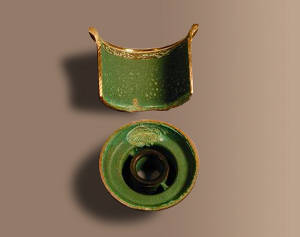Austenitic and Duplex Stainless Steels
Austenitic stainless steels are widely used in the process industries because of their corrosion resistance, ductility and weldability. As corrosion processes become more aggressive it has been usual to switch from a low alloy, such as 304L or 316L, to other austenitic alloys with more molybdenum and, sometimes, nitrogen.
Austenitic alloys contain significant quantities of nickel and molybdenum, which are both expensive. There is now a full range of duplex stainless steels, with lower nickel and molybdenum contents, and, hence, a lower cost. A cost comparison in summer 2012 for hot rolled 10mm plate showed that if 316L is 1.0, 2101 duplex was 0.8. Similarly, 6%Mo austenitic was 3.1, while superduplex was 1.5.
For every austenitic stainless steel there is a duplex stainless steel with similar corrosion resistance and much higher strength, offering further potential cost savings. The modern duplex stainless steels are fully weldable with good toughness and ready availability in a wide range of product forms. Below are some common austenitic alloys with their duplex equivalents.
AUSTENITIC DUPLEX
316L 2101/ 2003
317L/ 904L 2205
6%Mo Z100/ 2507
Posted on: 7th Sept 2016
Dezincification 3
 Many brasses are subject to dezincification, particularly hot stamping and die-casting brasses. The use of dezincification resistant brass usually solves this corrosion problem. This water meter body failed because the level of impurities was too high and changed the structure of the brass to one susceptible to dealloying. The use of a corrosion test to BS EN ISO 6509 would have demonstrated the unsuitability of this composition in aggressive waters.
Many brasses are subject to dezincification, particularly hot stamping and die-casting brasses. The use of dezincification resistant brass usually solves this corrosion problem. This water meter body failed because the level of impurities was too high and changed the structure of the brass to one susceptible to dealloying. The use of a corrosion test to BS EN ISO 6509 would have demonstrated the unsuitability of this composition in aggressive waters.
Posted on: 21st Aug 2016
Corrosion Fatigue 2
 This pump shaft in nickel-copper alloy K-500 failed by corrosion fatigue. The fatigue started at a pit caused by crevice corrosion in seawater, something that this alloy can be susceptible to. The pit then acted as a stress raiser, which increased local stresses sufficiently to initiate fatigue. This was an expensive failure as significant damage was done to the pump internals when the failure occurred.
This pump shaft in nickel-copper alloy K-500 failed by corrosion fatigue. The fatigue started at a pit caused by crevice corrosion in seawater, something that this alloy can be susceptible to. The pit then acted as a stress raiser, which increased local stresses sufficiently to initiate fatigue. This was an expensive failure as significant damage was done to the pump internals when the failure occurred.
Posted on: 21st June 2016
SCC Of Austenitic Cast Iron
 This is a microsection showing stress corrosion cracking of an austenitic cast iron pump case. This alloy has been used extensively for large, single stage pump cases, but it is susceptible to SCC in warm seawater. Stress relieving can extend the life, but failures generally occur in 1.5 to 5 years, depending on local stresses. The solution to this problem is to use a superduplex stainless steel pump case to ASTM A995 grade 6A, if cast, or to use a fabricated case made from UNS S32760.
This is a microsection showing stress corrosion cracking of an austenitic cast iron pump case. This alloy has been used extensively for large, single stage pump cases, but it is susceptible to SCC in warm seawater. Stress relieving can extend the life, but failures generally occur in 1.5 to 5 years, depending on local stresses. The solution to this problem is to use a superduplex stainless steel pump case to ASTM A995 grade 6A, if cast, or to use a fabricated case made from UNS S32760.
Posted on: 7th July 2016
Availability
During design, it is important to ensure that alloys being specified are readily available. Just because an alloy is listed in standards does not mean that it is currently manufactured. As an example, it was desired to change from copper to a brass for tanks in instant hot water heaters to reduce cost. In hot water dezincification is very likely with a brass, so a 70/30 arsenical brass to British Standard CZ126 or UNS C26100 was selected. Unfortunately, this is only available as pipe and tubing and not as sheet, which was required to make the heater. Copper-nickel was more expensive than copper, so no material change was made.
It is important to check availability before writing specifications to avoid costly delays.
Posted on: 7th June 2016

